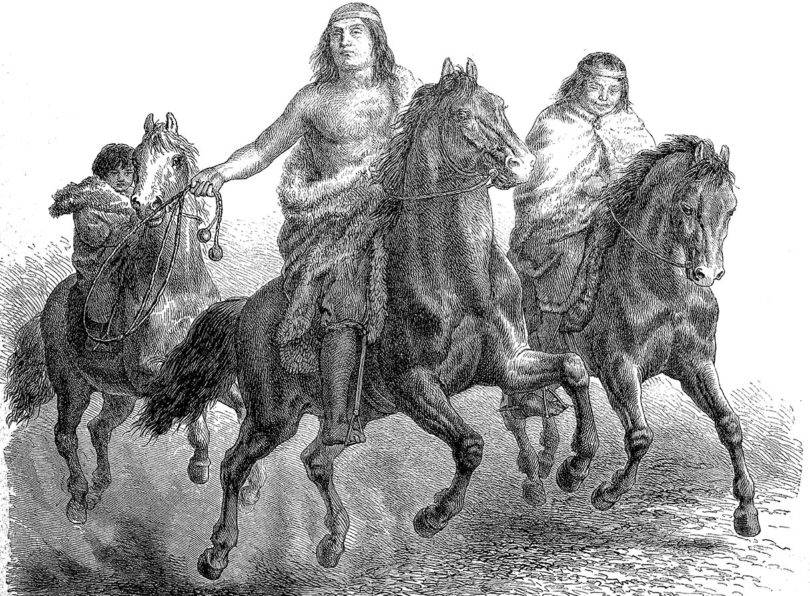The indigenous people of the southernmost tip of South America, known as Patagones, had been observed by the first Europeans to visit the region. According to one version of the story, the Europeans were amazed by their height and referred to them as “Patagones,” meaning “big foot” in Spanish. This name eventually came to represent the region itself, known as Patagonia.
Two centuries later, a British sailor stranded in Patagonia described a completely different scene. The locals, likely the Indigenous Tehuelche people, were no longer simply notable for their height. They were now riding horses, an animal that had been extinct in the region for thousands of years. The reintroduction of horses had a profound impact on Patagonian societies, more so than in any other part of South America.
A recent study published in Science Advances has determined the timeline for the arrival of horses in Patagonia. Researchers analyzed equine bones and teeth discovered during archeological excavations near the Chile-Argentina border. These bones and teeth were dated using radiocarbon dating, and the results showed that the people of the Chorrillo Grande region began keeping and eating horses in the 1700s, possibly even earlier, which was about a century before historical records mention horses in Patagonia.
Chemical analysis of the teeth revealed that the horses were moved in and out of the region during their lives, suggesting that their human handlers were moving them over long distances. Burn marks and animal fat residues found on pottery sherds confirmed that the horses were cooked and eaten, distinguishing Patagonian culture from that of the Great Plains in North America.
Experts comment that this study stands out due to its combination of various analyses, including chemical isotopes and DNA. It sheds light on how different regions in the Americas responded to the introduction of European practices, technology, and tools. This pioneering work helps illuminate a little-documented process of transformation that occurred after initial European contact.
The horse bones were found alongside European metal tools, glass beads from Venice, and scrapers made from broken glass, all indicating the adoption of European technologies and trade goods in Patagonia. Glass, in particular, was quickly incorporated into the local culture, much like the horse.
While glass scrapers were seen as an incremental improvement over flint and obsidian, the introduction of horses had a greater impact on the open grasslands of Patagonia. It expanded hunting ranges, increased transport capabilities, allowed for longer stays in one place, and provided a source of food.
DNA analysis of the horse bones even revealed that female horses were consumed, which was surprising considering they were usually valued for breeding purposes in European herds. In Patagonia, however, mares may have been prized for their relatively fatty meat, as there were few other sources of fat available.
Beyond understanding the spread of horses, this data has the potential to fill in historical gaps and shed light on how European technology and culture influenced societies in South America compared to North America during the same period. The horse was an important technology introduced by European settlers, and further analysis can provide insights into its adoption and the gradual process that occurred.
Earlier this year, the same research team conducted a study analyzing similar evidence from the Great Plains of North America, showing that horses arrived there earlier than previously thought. While complete horse skeletons on the Great Plains provided evidence of horseback riding, the fragmented bones found in Chorrillo Grande could only confirm that horses were being consumed. However, it is generally assumed that horse riding was an integral part of Patagonian culture, as British accounts from 1741 mentioned the Tehuelche’s mastery of horse riding.
The Tehuelche people were also known for their innovation, such as using weighted rope snares called bolas to hunt guanaco and flightless rhea birds while riding horses. They transported their distinctive guanaco skin shelters on horseback when moving from place to place. It is strongly believed that they were raising and riding horses much earlier than documented, but there is still much to be learned about the nature of their relationship with these horses.
The indigenous people of Patagonia had been skilled in horse riding well before the arrival of Europeans
Advertisement
Advertisement

